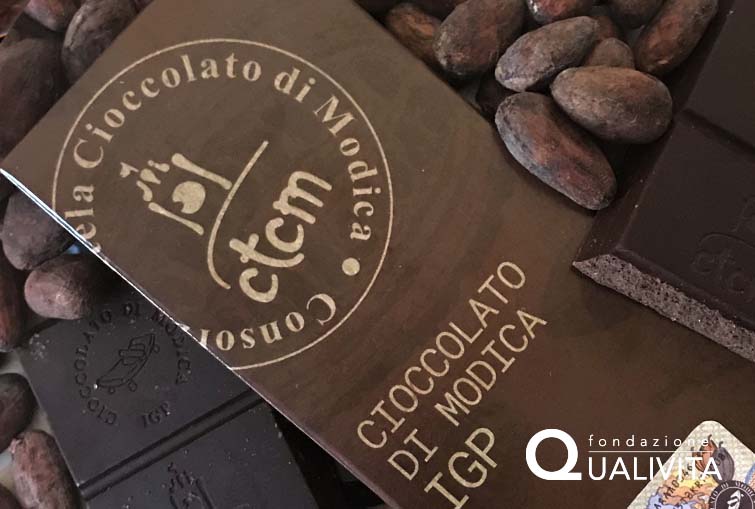Cioccolato di Modica
Cioccolata Modicana, Chocolate of Modica
The cioccolato di Modica is an Italian protected geographical indication (PGI) specialty chocolate, typical of the comune (municipality) of Modica, in Sicily, characterized by an ancient and original recipe using manual grinding (rather than conching) which gives the chocolate a peculiar grainy texture and aromatic flavor. As a prodotto agroalimentare tradizionale (PAT), it is a specialty officially recognized by the Italian Ministry of Agriculture, Food and Forestry Policies. Modica chocolate is made "cold" (a freddo) according to a traditional recipe and is not conched. The specialty was introduced in the County of Modica by the Spaniards, during their domination in southern Italy. Their noble house was the most influential feudal power in southern Italy in the 16th century, during the Spanish domination of Sicily. Even today there is a similar form of preparation in Spain in the form of chocolate a la piedra; such varieties are also known in Mexico and Guatemala. According to Leonardo Sciascia, the recipe comes from Alicante; there were originally only two forms of preparation, with cinnamon and with vanilla. Before the product became an internationally known specialty, it was a holiday dessert in noble families. The Spaniards probably learned from the Aztecs the technique of processing cocoa beans through the use of metate; however, Modica chocolate uses sugar in addition to cocoa, an ingredient which would have been unavailable to the Aztecs.
Source: Wikipedia


